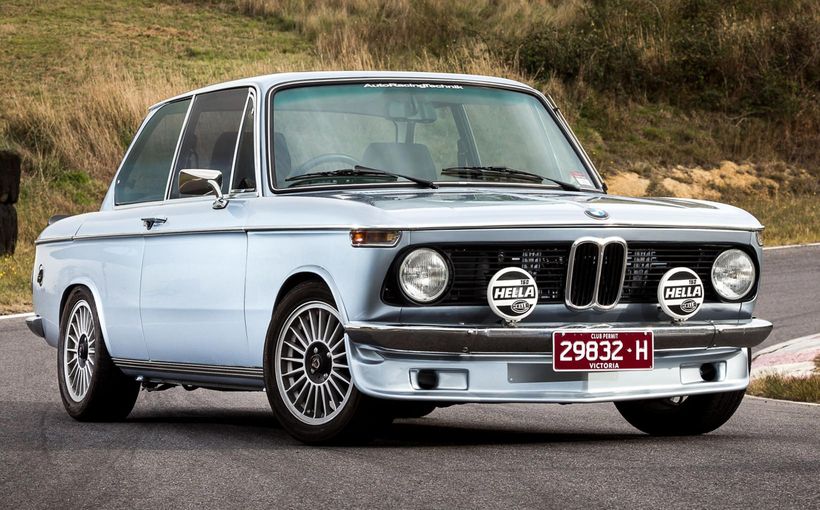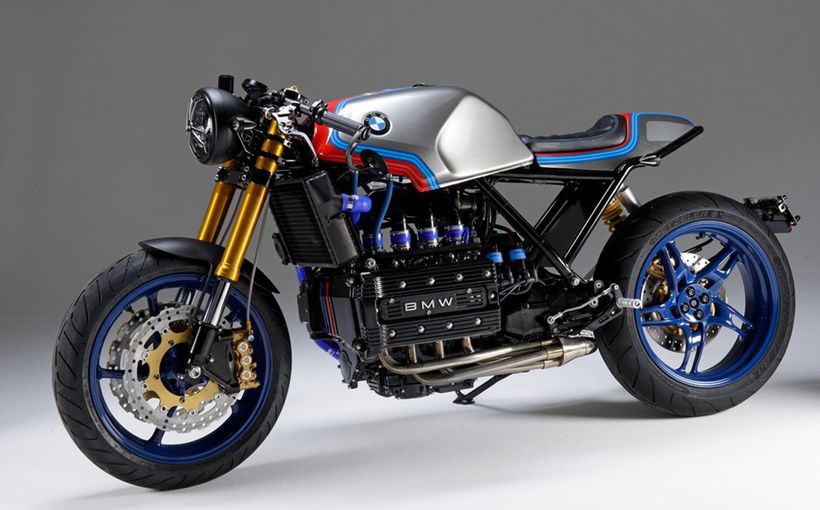Elegant, understated, unique: BMW’s ‘New Six’ sedans and coupes

True confession time: like any car-crazed Aussie adolescent I was hooked on Falcon GTs and Monaros, but by the time I was 23 no other car occupied my imagination like a 1971 BMW 2800 sedan. Red. Manual. (Happy though I was with my pale blue 1966 Fiat 1500 Mark III, this seemed to me the ultimate sports luxury sedan.) And I know exactly where this obsession dates from.
One of the cover lines on the November 1971 edition of Wheels magazine reads: ‘We pick world’s best sedan.’ Editor Peter Robinson and a young journalist called Steve Cropley took a Jaguar XJ6 and the newly launched BMW 2800 from Sydney to Melbourne down the Hume, ran performance figures on a private test strip and then returned via the Princes Highway.

The verdict? Robbo chose the Jaguar while Cropley opted for the Bee-Emm. Interestingly, decades later, Cropley reckoned he had got it wrong and the Jaguar was the superior car. When I read this retraction, I felt some relief because it was Jaguars I had taken to collecting, not E3 BMWs. Now, I cannot remember the last time I saw one of these cigar-shaped sedans in the metal. Given the choice between equivalent-condition 1971 specimens, I’d choose the BMW in the twinkling of an eye.
Perhaps it’s largely the rarity of these cars that is a key element in my affection for them. But looking back on my ownership of no fewer than seven XJs and just the one 3.0S (successor to the 2800), I have no doubt that not only was the German car subtler, but it was also much better built and more reliable; just where they have all gone I can’t say, but doubtless some are lurking in private collections.

In late 1968 the Bayerischen Motoren Werke – on a roll after the success of its 1961 Neue Klasse 1500 sedan and giantkilling two-door 2002 (1966) – introduced a pair of ‘New Six’ luxury models, identical in appearance but with different capacity engines and some variations in equipment.
The new dual-carburettor straight six-cylinder engines were so closely related to the existing fours that they shared their single overhead camshaft gear, front-end chain drive, combustion chamber shapes, pistons, valve gear and more. They were even similarly installed and canted over in their respective engine bays.
The E3s also used the same type of semi-trailing arm independent rear suspension mounted on a separate rear sub-frame.
The volume selling model was the 2500. The flagship 2800 came with a limited slip differential, self-levelling struts, heated rear window and headrests.
The 2.5-litre unit gave 150 horsepower (nett) and the 2.8 170.

While more obviously luxurious than the Neue Klasse four-cylinder cars, the 2500/2800 were understated compared with the walnut-and-leather Jaguar. They were Mercedes-Benz rivals, intended for well-heeled customers who wanted a more sporting type of luxury car. BMW’s new management under Herbert Quandt had a clear plan to revive the company rescued from bankruptcy via the Quandt family chequebook.
Neither Peter Robinson nor Steve Cropley (nor anyone else) could possibly have known back in 1971 that BMW was already putting the pieces in place to become to the final quarter of the twentieth century and beyond what Jaguar had been in the 1948 to early 1970s time frame. If the quintessential sports sedan of 1959 was the Jaguar Mark 2 3.8-Litre (with manual transmission and overdrive and chrome wire wheels), its true spiritual successor would be the BMW 5-Series, starting with the first E12 528i in 1972.

But before the 528i came the 2800. In 1971 it cost $9225 plus $335 for optional power steering, putting it lineball with the XJ6 at $9554. At that time a Datsun 1600 cost $2363, a Torana XU-1 was $3214, an XY GTHO $5015, a Mercedes-Benz 280SEL 3.5 $13,823 and a Rolls-Royce Silver Shadow $26,955.
The 2500 was priced at $7190, when launched locally in 1970.
This supposedly definitive comparison test by Wheels staffers makes equally fascinating reading all these decades later. With its 1968 XJ6 model, Jaguar put all its saloon eggs in the one elegant basket. The XJ replaced both the gargantuan (no other adjective feels quite as apt) 420G, the compact 240 and 340 (successors to the Mark 2 2.4, 3.4 and 3.8) and the intermediate 420. Manual XJ6s were not on offer in Australia until 1982. The 4.2-litre XK engine which made the E-Type such a sparkling performer was muted by the three-speed automatic transmission and the need to tote 3718lb (1686kg). So, while the Jaguar had a high top speed of 124.5 miles per hour (200km/h), its standing quarter-mile time of 17.9 seconds was not quick even by 1971 standards – or should I say especially by 1971 standards, given the existence of the inspirational GTHO Phase III? There was, then, by 1968 no Jaguar sedan to sustain the reputation of the 3.8 Mark 2 with its 16-second quarter-mile time.
The E3 BMW 2800 was a very different car from either the XJ6 or the Mark 2 3.8. There was nothing especially overt about its design, either externally or in the highly functional cabin. It had a kind of athletic austerity, with no sense of waste or excess. Indeed, the 2800 weighed just 2978lb (1351kg). Despite having just two-thirds of the engine capacity, the manual 2800 raced through the quarter in 16.4 seconds. It reached sixty miles per hour in 9.1 seconds, compared with the Jaguar’s 10.7. V Max was 122 miles per hour (196km/h).

BMW’s plan with the E3 was to edge it in the direction of sporty on the sports to luxury spectrum; by contrast, Jaguar’s XJ6 favoured the luxury end. There was a confidence that good as the big Mercedes models were, they were softer in character and more conservative than perhaps some (probably younger) buyers would have liked: this was the niche to be created and filled by the 2500 and 2800, the overwhelming majority of which were expected to be fitted with four-speed manual transmissions rather than the optional ZF three-speed automatic.
Just as the Neue Klasse ushered in a new kind of focused four-cylinder sports sedan, the E3 did the same thing for upmarket cars. In the Australian context, perhaps the best way of defining the BMW 2500/2800 is to say that they were to the luxury sedan class pretty much what the Fiat 125 was to the compact sports sedan category.
A clever advertisement headed ‘PRIVATE CIRCLE’ declared:
The BMW 2500 has only two competitors in appearance, comfort and performance – itself and the BMW 2800. It will be out in the new year.
Perhaps in 1968, Quandt and colleagues were not quite sure where they would go next with their luxury sedans. The E3 was nowhere near as successful either in relative or absolute terms as that landmark BMW 1500 had been. Too few comfortably-bellied Mercedes-Benz stalwarts were willing to forgo their three-pointed star gunsight for the blue and white roundel. The brand BMW did not have the cachet in 1968 it would have earned within the next decade, thanks to the popularity of first the 5-Series and then, even more dramatically, the 3-Series.
As it happens, the successor to the E3 would – logically – be the 7-Series, an offering closer to the XJ Jaguar and considerably bigger than the older cars. But before that happened in 1977, there was more excitement at the upper end of BMW’s sedan range.
The 3.0S superseded the 2500/2800 in 1972. It was a sublime motor car. I bought my silver example in October 1983. It replaced an entirely unreliable but nonetheless lovable Triumph 2.5 Pi. My BMW gave me a yardstick by which to measure all new test cars that came – usually on a weekly basis – into my hands. I believed that having my own car gave me one clear advantage over colleagues who only ever drove OPs: it was a constant.

In the 18 months I owned it, very few cars I tested were its equal. Yes, sure, the Jag XJ in Series III guise with the Pininfarina facelift and fuel-injection was one (much better, I have always believed than the original and the Series 2 ‘chrome bumper’ models) – though no quicker and barely better-riding. I spent a lot of time in a VC Commodore wagon and the only contest where it beat the BMW was carrying a load; climbing highway hills the 3.0S automatic left it for dead!
But the 3.0S, sublime as it was, soon submitted to an even better BMW. This was the fuel-injected 3.0Si which first drove out of local showrooms in 1973 on a set of sublime Cromodora alloy wheels. Peter Robinson tested one of these. The Si was manual-only and ran a 15.6 second quarter on the way to 132 miles per hour (210km/h). In 1974 the first long-wheelbase version (3.3L) was introduced. But without question the E3 of choice is the 3.0Si (I could have bought a lovely Fjord Blue one in circa 1985 for $12K.)

Just months after the E3 sedans were shown in late 1968 for model year 1969 came the E9 coupe, the 2800CS. This was a stretched version of the 1965 2000CS, equipped with the six-cylinder engine and shark-like frontal treatment. In 1971 the 2800CS was superseded by the 3.0 CS. Nineteen seventy-three brought the lightweight 3.0 CSL with 3.5 litres and which, thanks to its extreme wings and spoilers, was quickly dubbed the Batmobile. The CSL, driven by Toine Hezemans, won the 1973 European Touring Car Championship. But the six-cylinder BMW coupes were never sold new in Australia until 1985 when the 635CSi was introduced to the market in very low numbers.

In the eight years from 1968 to 1976 these BMWs set the standard for luxury sedans with a strong sporting flavour. It was a niche that Jaguar had effectively vacated. But, as BMW found, the vast majority of customers in search of a top-end car were less concerned with driving dynamics than perceived prestige. The E9 may perhaps be thought of as a kind of German Maserati Quattroporte. Only better.











